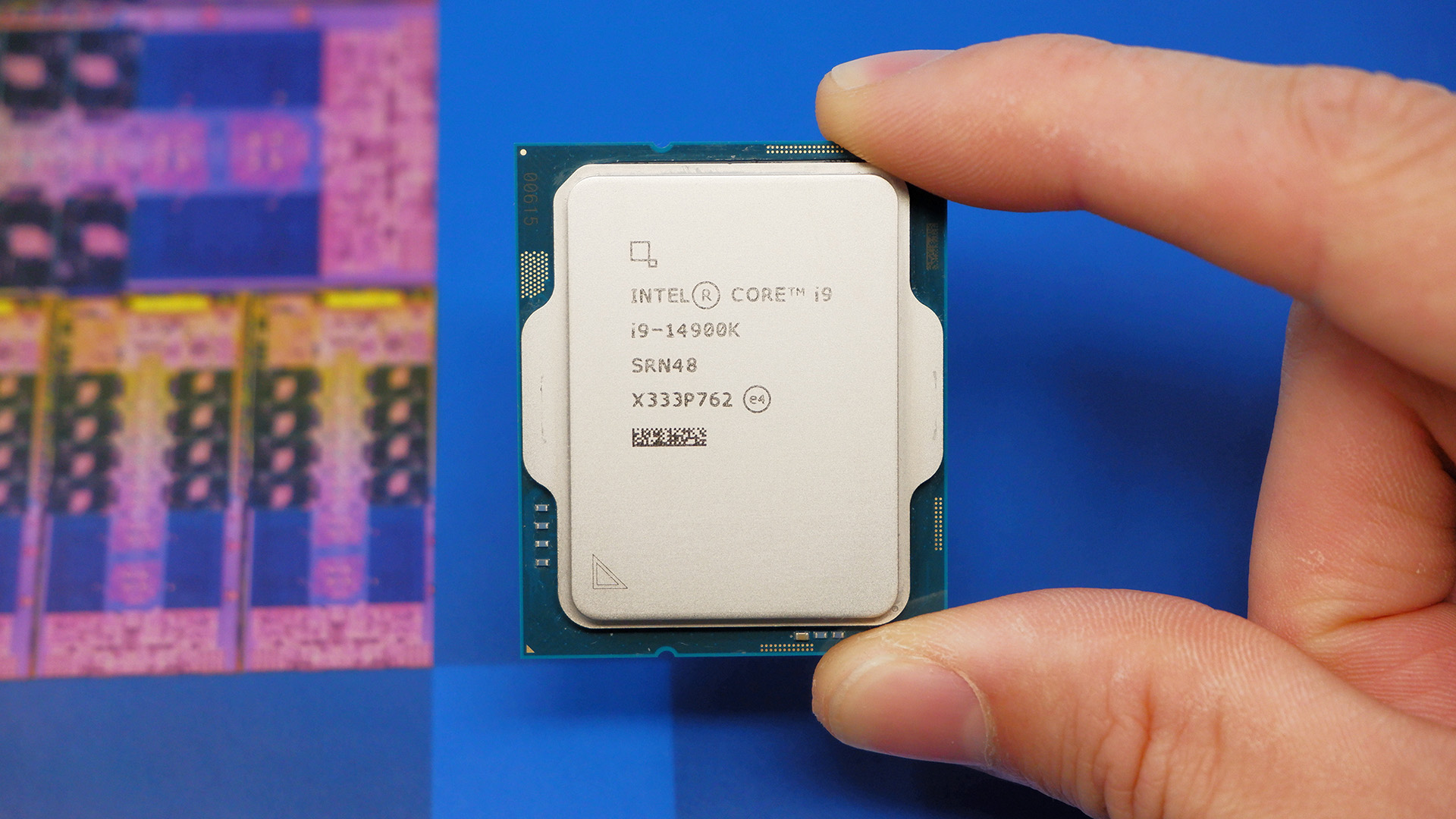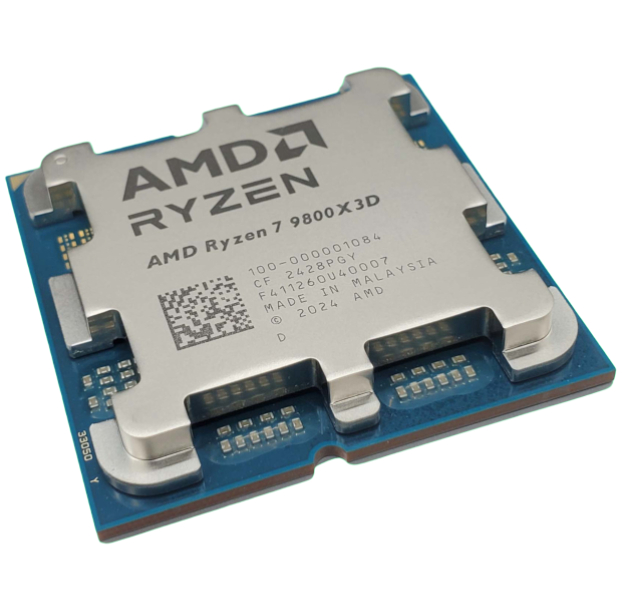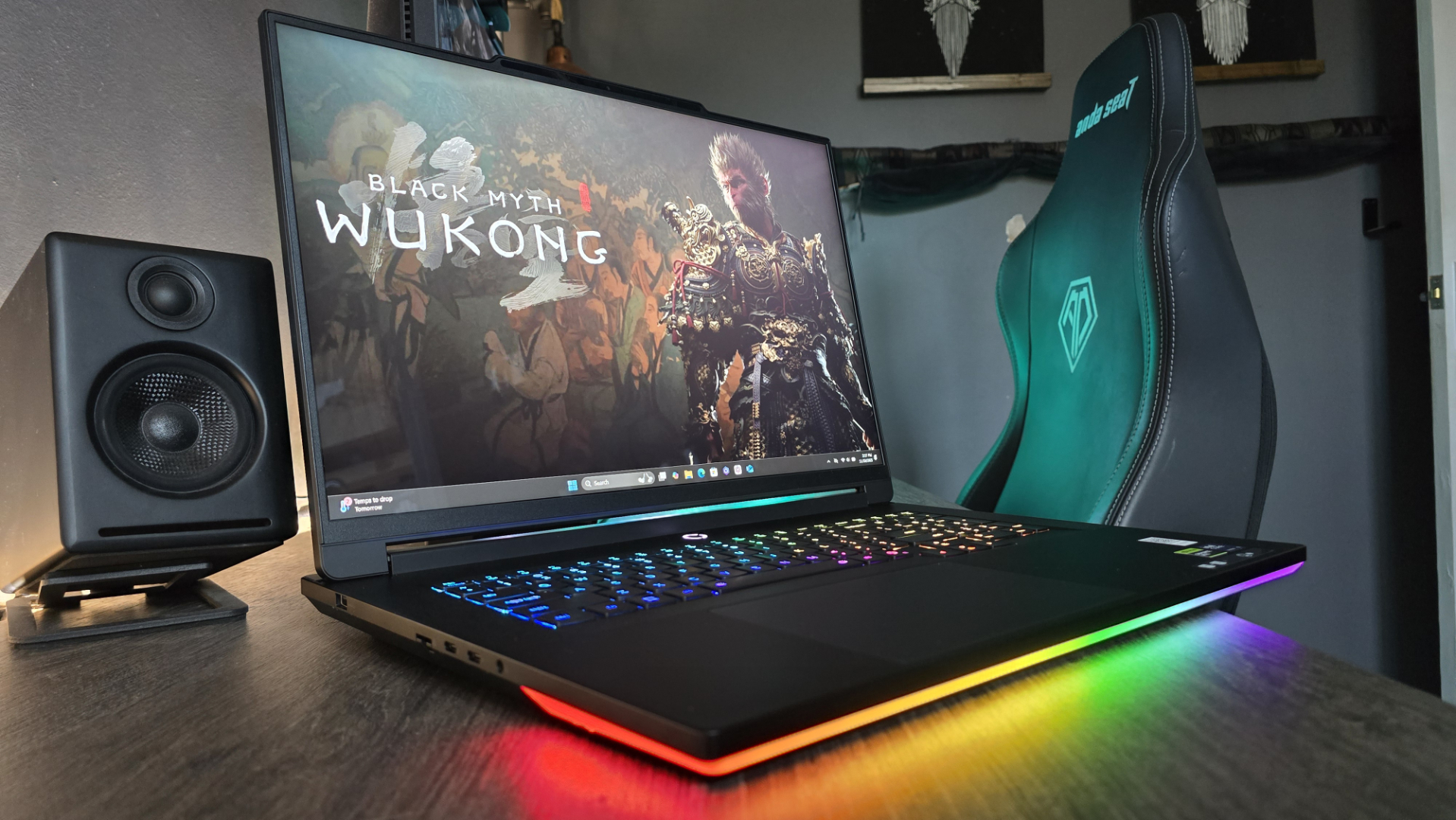The radiance of a thousand suns: Overclockers set a new world record of 9.1 GHz with a P-core only 14900K
Admittedly, only one of the cores hit that speed, but it's still one heck of an achievement.

Echoing George Mallory's apparent response of "Because it's there" when asked why he wanted to climb Everest, super-serious overclockers need no reason for pushing hardware into uncharted territory. Armed with years of experience and no small amount of liquid helium, one team of tweakers has pushed what Intel CPUs can reach just that little bit further, with a Core i9 14900K reaching an utterly remarkable 9.1 GHz.
Word of the achievement was reported by Uniko's Hardware, which was part of the team behind the endeavour, and you can read more details of the overclocking result in the HWbot database. On face value, it might seem quite simple to do: take a standard Asus ROG Maximus Z790 Apex motherboard, slap some Corsair Vengeance DDR4 and a GeForce RTX 3050 into it, along with an Intel Core i9 14900K.
hwbot cpu frequency new world recordno.1 - 9,130.33 MHz intel 14900kf + asus m15aachieved by overclockers in chinawytiwx:Crazy again! Thanks Corsair, ROG, Thermal Grizzly, ElmorLabs and my dear teammates MickaShuBL, Crystalright, Markjinli.https://t.co/tyFCd7N6wx… pic.twitter.com/1c68igiSL8August 26, 2025
The latter normally maxes out at 6.0 GHz for a single P-core, so how exactly did the team manage to increase that by 52%? For starters, they disabled all the E-cores before setting about tweaking all kinds of BIOS settings. Somewhat obviously, using an ordinary CPU cooler was kind of out of the question—the 14900K runs hot at the best of times, so at 9.1 GHz, it's clearly going to replicate the surface of the Sun.
Enter stage left, an awful lot of liquid helium. Under atmospheric pressure, it boils at −269 °C (−452 °F), making it ideal for removing heat from the CPU very quickly. It also just so happens to look extremely awesome while doing so, with vast clouds of condensation adding to the sheer coolness of it all (pun not intended).

It's worth noting that the record of 9.1 GHz was achieved on a single P-core, but that's normal for such attempts; the same is true of the overall test conditions. Think of it as being like top fuel drag racing—super impressive stuff, if not exactly eminently useful to mere mortals.
You might wonder if it'll be possible to hit 10 GHz with a current AMD or Intel chip. The answer is almost certainly no, and that's because there's an enormous and insurmountable power wall with silicon-based transistors, once they're switching at that rate in a standard processor. Perhaps it might be different with other materials, but we're going to be stuck with silicon for a good while yet.
Eventually, that will change, of course, and you can be sure of one thing when that does happen—overclockers will be on hand with their liquid helium to see what records they break with those chips. Why? Because they can.
Keep up to date with the most important stories and the best deals, as picked by the PC Gamer team.

1. Best overall:
AMD Ryzen 7 9800X3D
2. Best budget:
Intel Core i5 13400F
3. Best mid-range:
AMD Ryzen 7 9700X
4. Best high-end:
AMD Ryzen 9 9950X3D
5. Best AM4 upgrade:
AMD Ryzen 7 5700X3D
6. Best CPU graphics:
AMD Ryzen 7 8700G

Nick, gaming, and computers all first met in the early 1980s. After leaving university, he became a physics and IT teacher and started writing about tech in the late 1990s. That resulted in him working with MadOnion to write the help files for 3DMark and PCMark. After a short stint working at Beyond3D.com, Nick joined Futuremark (MadOnion rebranded) full-time, as editor-in-chief for its PC gaming section, YouGamers. After the site shutdown, he became an engineering and computing lecturer for many years, but missed the writing bug. Cue four years at TechSpot.com covering everything and anything to do with tech and PCs. He freely admits to being far too obsessed with GPUs and open-world grindy RPGs, but who isn't these days?
You must confirm your public display name before commenting
Please logout and then login again, you will then be prompted to enter your display name.

